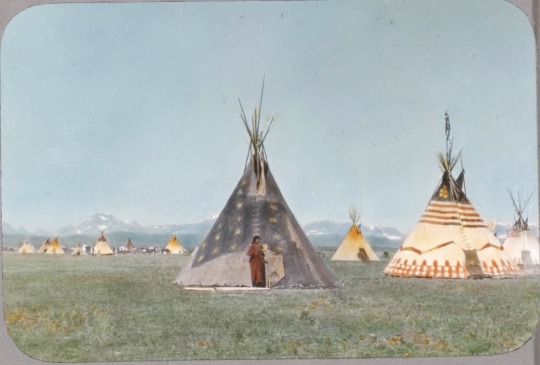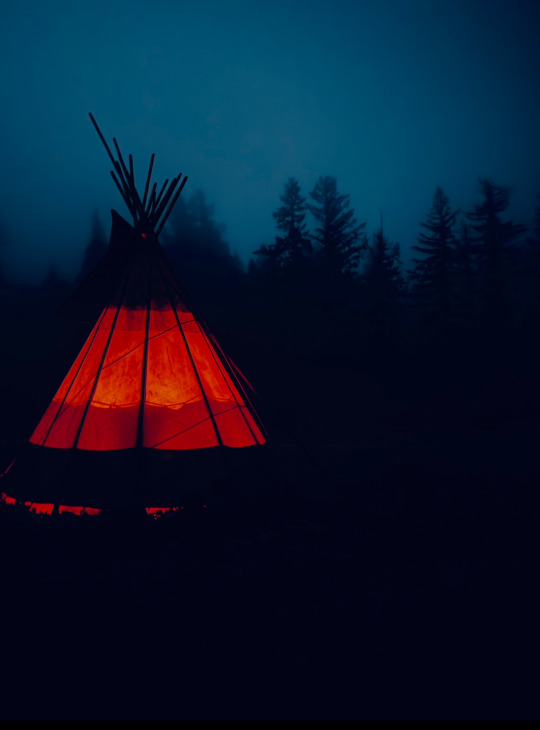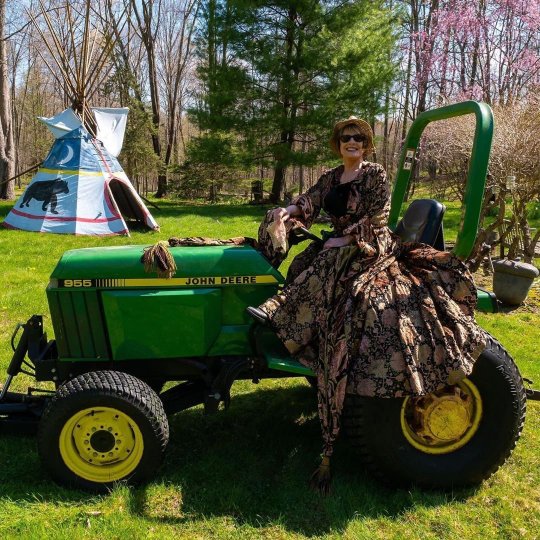#tipis
Explore tagged Tumblr posts
Text







Walter McClintock (1874-1946) - lantern slides - Siksika Indians - Blackfoot Nation - Montana
#photography#slides#blackfoot#nature#indigenous peoples#siksina#montaña#flickr#library archives#tipis#indigenous#people#vintage
1K notes
·
View notes
Text
Un toque único y encantador para tu jardín o terraza
Un tipi es más que una simple estructura; es un elemento decorativo que aporta encanto, calidez y personalidad a cualquier espacio exterior. Ya sea en un jardín amplio o en una terraza pequeña, los tipis pueden transformar tu entorno en un lugar acogedor y único. Continue reading Un toque único y encantador para tu jardín o terraza

View On WordPress
#decoración#decoración de exteriores#diseño de jardines#jardines#terrazas#tipi#tipi de decoración de interiores#tipis#tipis de paisaje#tipis deco
4 notes
·
View notes
Text

6 notes
·
View notes
Text
Rapi
Blio: tadi Bu Wortel kirim jam berapa?
Hayati: uhm, siang, Pak, di sela meeting
Blio: itulah, saya maunya pagi sudah tidak otak-atik laporan, bisa fokus kawal acara dan tamu. makanya slide kamu yang sudah rapi itu saya hapus, saya ganti.
s e t i p i s s s itu sudah kukategorikan pujian. eh, mungkin bukan pujian, tapi lebih kepada pengakuan kalau pekerjaanku rapi, wkwkwk. meskipun setelah rapat ngebul, tapi hatiku hepi, sisa hariku ringan. alhamdulillah ala kulli hal.
1 note
·
View note
Text
The Use of Wickiups and Tipis in Apache Culture

Image generated by the author
The Resilience of Apache Culture: The Significance of Wickiups and Tipis
As the sun dips below the horizon, casting a warm golden glow over the Southwestern landscape, the air fills with the aroma of sagebrush and woodsmoke. Families gather around a crackling fire, their laughter mingling with the soft rustle of the wind. This scene, steeped in tradition, is not merely a festive gathering; it is a vibrant reminder of the Apache people’s enduring connection to their land and culture. At the heart of these gatherings are two remarkable structures: the wickiup and the tipi. These dwellings, crafted from the natural materials of their environment, are much more than shelters. They embody the spirit, resilience, and adaptability of the Apache way of life.
Historical Context: A Nomadic Heritage
Imagine a time long ago, when the Apache people roamed the vast expanses of the Southwestern United States. Their existence was characterized by a profound relationship with the land, dictated by the rhythms of nature. As hunters and gatherers, they relied on their ability to adapt quickly, crafting shelters that matched their nomadic lifestyle. Wickiups, constructed from branches, grass, and dirt, served as temporary homes, allowing families to easily move as they followed game and seasonal resources.
Conversely, tipis, crafted from wooden poles and animal hides, represented the ingenuity of the Apache. These structures were not just functional; they were designed with an understanding of the environment that surrounded them. The conical shape of the tipi facilitated warmth during the bitter cold of winter, while its circular design promoted airflow, keeping the interior cool during the sweltering summer months. Both the wickiup and the tipi were integral to Apache life, serving practical purposes while also hosting cultural and spiritual rituals that reinforced community ties.
Cultural Significance: A Reflection of Identity
Beyond their physical forms, wickiups and tipis are symbols of Apache identity. They reflect core values that resonate deeply within the Apache ethos: harmony with nature, adaptability, and community. The very act of gathering within these structures fosters a sense of belonging and continuity, as stories are shared and traditions are passed down through generations.
Picture the spacious interior of a tipi, where families come together, seated in a circle around the fire. The flames flicker, casting dancing shadows on the hide walls, as an elder recounts tales of bravery and wisdom. This is not just storytelling; it is a vital educational process, where the youth learn about their heritage and the lessons embedded in their ancestors’ experiences. The construction of these dwellings itself teaches respect for the land and the importance of living sustainably. Each pole, each branch used in their creation, carries with it the spirit of the environment, reminding the Apache of their responsibility to protect and honor their surroundings.
An Apache Story: Lessons from Elders
One particularly poignant story comes from Shasta, a revered elder in the Apache community. He recalls his childhood, filled with warmth and laughter within the walls of a wickiup. “These structures,” he explains, “are not just homes; they are a testament to our resilience.” Shasta describes how each season brought with it a new adventure, as his family would dismantle the wickiup and relocate in search of food and resources. This mobility, he emphasizes, is what has sustained the Apache people for centuries.
Through Shasta’s eyes, we see the wickiup not merely as a shelter but as a vessel of survival, unity, and respect for nature. Each gathering around the fire was a chance to reinforce family bonds, share knowledge, and weave the fabric of their community tighter. The wisdom that resides within these stories offers invaluable lessons about adaptability and the importance of living in synchronization with nature.
Construction Techniques: A Legacy of Ingenuity
The construction of wickiups and tipis exemplifies the Apache's understanding of their environment. Wickiups, often temporary structures, are ingeniously designed to be easily assembled and disassembled, allowing for mobility in a nomadic lifestyle. Their walls, made from locally sourced materials, provide shelter from the elements, while their design promotes warmth in winter and ventilation in summer.
On the other hand, the tipi, while often associated with Plains tribes, also holds significance for various Apache groups. Its design is not just about form; it is a deep-seated understanding of how to utilize the environment effectively. The use of animal hides not only provides insulation but also allows for a connection to the animal world—a reminder of the Apache’s respect for all living beings. Cultural anthropologists and historians emphasize that these structures are not just remnants of the past; they are a testament to the Apache's adaptability and innovative spirit.
Practical Applications: Sustainability in Action
As we look at the world today, the principles embodied in the construction of wickiups and tipis offer practical lessons for modern living. In an era marked by environmental crises and a disconnection from nature, the Apache way of life provides a blueprint for sustainable practices. The circular design of tipis encourages energy efficiency; it utilizes natural heating and cooling methods, thereby minimizing reliance on modern energy sources.
Moreover, the use of local materials showcases an understanding of resourcefulness that is increasingly relevant in our society. By embracing these ancient techniques, we can foster a greater connection to our surroundings and build communities that prioritize sustainability. The Apache teachings remind us of the value of living in harmony with nature, a lesson that can no longer be overlooked in the face of climate change.
Modern Relevance: A Call to Action
In a world that often seems disconnected from its roots, the traditional structures of the Apache serve as symbols of resilience and harmony with nature. Rising environmental concerns and the quest for sustainable living have sparked renewed interest in these ancient methods of shelter. The Apache way of life encourages us to reflect on our relationship with the earth and consider how we can incorporate communal spaces into modern designs, fostering connections reminiscent of their culture.
As we navigate the complexities of contemporary living, we would do well to draw inspiration from the wisdom of the Apache. Their adaptability and deep understanding of the environment can guide us in facing the challenges posed by climate change and environmental degradation. Imagine urban centers that incorporate communal gathering spaces, where storytelling and cultural education thrive, echoing the traditions held within Apache dwellings.
Conclusion: A Legacy Worth Honoring
As the fire dwindles and the stars blanket the night sky, the Apache wickiup and tipi stand as enduring symbols of resilience, adaptability, and a profound understanding of the environment. They are not mere structures; they are reflections of Apache identity and values, carrying forward teachings about sustainability and community that are urgently needed in today’s world.
In honoring the legacies of these traditional shelters, we must also acknowledge the importance of integrating this wisdom into our contemporary lives. The Apache people remind us of the delicate balance we must maintain with nature and the strength found in community. So, as you ponder the legacy of these remarkable structures, ask yourself: How can we adapt these lessons to foster a more sustainable and connected world? The answer may lie in the very wisdom that has guided the Apache people for generations, waiting to be rediscovered and embraced anew.
About Black Hawk Visions
Black Hawk Visions preserves and shares timeless Apache wisdom through digital media. Inspired by Tahoma Whispering Wind, we offer eBooks, online courses, and newsletters that blend traditional knowledge with modern learning. Explore nature connection, survival skills, and inner growth at Black Hawk Visions.
AI Disclosure: AI was used for content ideation, spelling and grammar checks, and some modification of this article.
About Black Hawk Visions: We preserve and share timeless Apache wisdom through digital media. Explore nature connection, survival skills, and inner growth at Black Hawk Visions.
0 notes
Text

old 2022 spm drawing i never posted
#my style got a lot more stylized/cartoonish since its cute to look back and see how i used to have this semi-realistic pencil drawing style#tp drawing#super mario bros#smb#spm#super paper mario#mario#luigi#princess peach#bowser#dimentio spm#mr l#mr l spm#mimi spm#nastasia spm#count bleck#count bleck spm#o chunks#o chunks spm#mario spm#luigi spm#tipi spm
889 notes
·
View notes
Text

i n n e r s t r e n g t h . . .
441 notes
·
View notes
Text
🎤 Blue haired idols 💙
Marinette & Marc perform on stage while having their own biggest supporter at the back 💗 📣


This was actually a screenshot from my little animatic 🎵
#miraculous ladybug#adrien agreste#marinette dupain cheng#adrienette#marinette x adrien#nathaniel kurtzberg#marc anciel#marcaniel#nathaniel x marc#they’re dancing to TIPI TAP by kepler#the code is L-O-V-E#Marinette and Marc are twinning
230 notes
·
View notes
Text
Edward S. Curtis, 1906. This picturesque camp of the Apsaroke was on the Little Bighorn River, Montana, a short distance below where the Custer fight occurred.

An encampment, probably of the Crow Indian tribe, located on the bank of a river. - Miller - 1900s
19 notes
·
View notes
Text

i love absolutely everything abt this pic
#the truck the trees the tipi the dress the smile#it's giving farmer gorgeous diva#i'm living for it#patti lupone
184 notes
·
View notes
Text
now and then I remember I'm as tall as jinx and I think of these pictures and just...yeaaaaaaaa


#THIS IS THE HEIGHT DIFFERENCE I DESERVE!!!#tipy toes to kiss my wife#💗💗#arcane#arcane series#arcane season 2#arcane x reader#arcane sevika#sevika x reader#jinx
205 notes
·
View notes
Text

sheridan, wyoming 1972
all american indian days
photograph by nick dewolf https://www.flickr.com/photos/dboo/15359685790
#photography#film#color#35mm#sheridan#wyoming#nativeamerican#indian#sioux#tipi#teepees#people#women#traditional#clothing#festival#powwow#slide#1970s
99 notes
·
View notes
Text






























KEP1ER ୨ৎ TIPI-TAP CONNECT N CONCEPT PHOTO
#kep1er#kep1ernetwork#underratedgirlsedit#idolady#kgoddesses#ggnet#femaleidol#femaleidolsedit#femadolsedit#kep1er tipi-tap#kep1eredit#hikaru#xiaoting#bahiyyih#youngeun#dayeon#yujin#chaehyun#kep1er hikaru#kep1er yujin#kep1er bahiyyih#kep1er xiaoting#kep1er chaehyun#kep1er youngeun#kep1er dayeon#*edits#oh they look so good!
173 notes
·
View notes
Text
Powwow 🐦 New York 🗽 Fancy Shawl Dance 💃



#Indigenous People Day#Randalls and Wards Islands#Harlem River Event Area#Randall's Island Park#Teepee#Indigenous#Native#American#Powwow#Festival#Tipi#Dance#Fancy Dance#Grass Dance#Pow Wow#New York City#New York#Redhawk Native American Arts Council#United Confederation of Taino People#American Indian Community House
171 notes
·
View notes
Text













TipiTop Tents, Tarragona, Catalonia, Spain,
Courtesy of Canobardin
#art#design#architecture#travels#luxury lifestyle#interiors#glamping#camping#tent#tipi#tipitop#catalonia#nature#spain#tarragona#canobardin#julio cano#barbara bardin
181 notes
·
View notes
